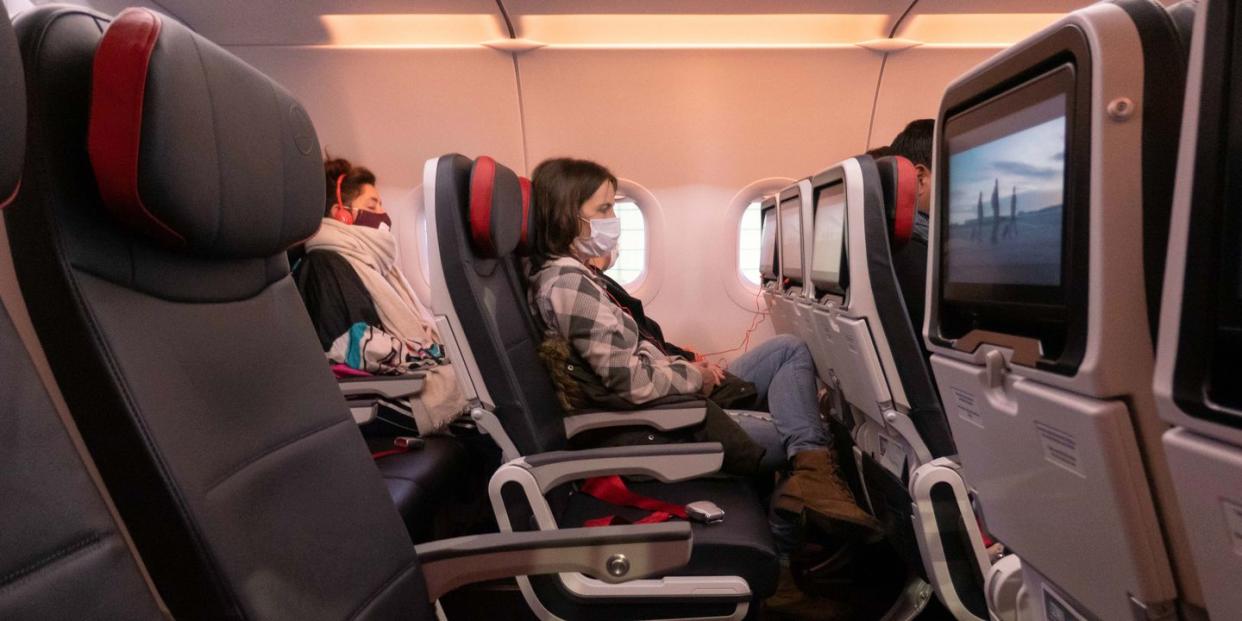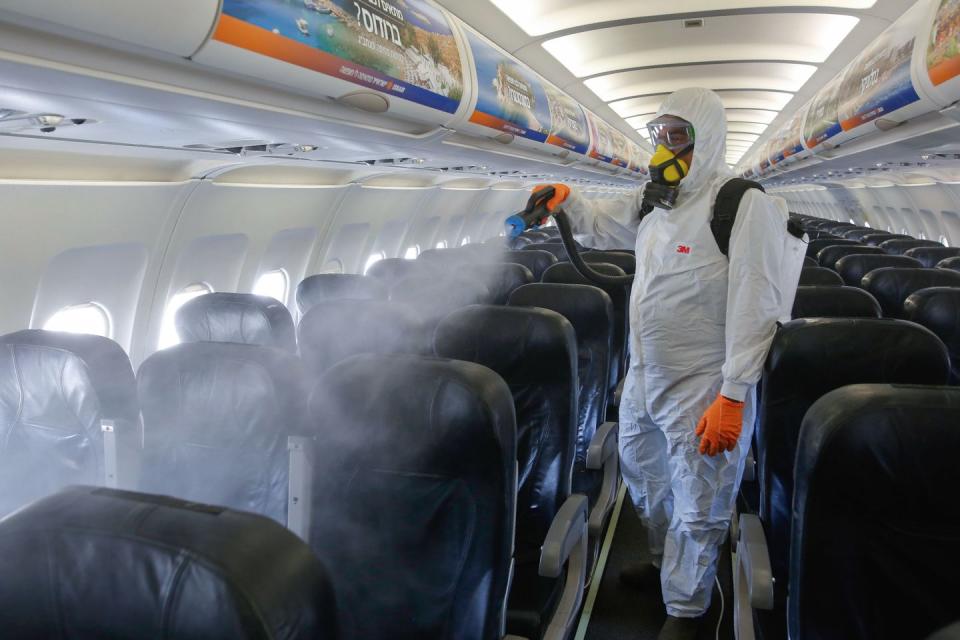The Safest Place To Sit On A Plane, And Your Other Coronavirus Travel Questions Answered

Hopping on a plane and jetting off for your summer getaway probably isn’t top of everyone’s priorities in the middle of a pandemic. That said, there are only so many boxsets you can binge in between Zoom calls with your boss; eventually, we all need a change of scenery.
With air travel slowly reopening and plans to write your magnum opus long since abandoned, it’s only natural to want to start spreading your wings a bit, and rediscover the world beyond your flat and the Tesco queue.
While the rules around air travel remain flexible as the situation evolves, it’s worth pointing out that at present a mandatory 14-day post-holiday quarantine still applies when travelling from certain countries, including the US, Canada, and much of the Middle East, Asia, and Central and South America. Likewise, you may be banned or have to meet special requirements when travelling to the likes of Australia, South Korea, Barbados and Iceland.
Difficulties and inherent risk aside, it can be done, and done in relative safety.
“The main problem with air travel is not the air itself, but having other people in close proximity for more than 15 minutes,” says Vincent Racaniello, virology professor at Columbia University and host of the podcast This Week in Virology. “In most commercial airplanes the air is typically well filtered, most of it is brought in from the exterior and heated up during compression.”

Racaniello also points out that in planes the air flows down from the ceiling to the floor, as opposed to along the length of the cabin, which is important as infected droplets of saliva typically fall harmlessly to the floor and won’t be spread down the aisle. In other words, unless the passengers immediately around you look particularly ropey, you should be OK.
In fact, even in cases of midair outbreaks, only a small percentage of passengers have contracted the virus, as Professor Racaniello explains.“Virus transmissions on airplanes in the past typically involve the eight or so passengers around the infected person, not the entire plane.”
Want to maximise your chances of landing safely? Professor Racaniello’s pre-boarding safety announcement will help.
OK, I’m biting the bullet and packing a suitcase. What’s the best seat to book on a plane, and why?
“A window seat, that way you can avoid the aisle traffic. Once you’re situated, use the alcohol wipes that you have brought to clean the surface around the window,” Professor Racaniello advises. “And wear a face mask for the entire flight. Don’t take it off if you can help it – you can survive without eating. Drink water by slipping up the mask and using a straw (bring your own). If you can afford business, fly there as there is less foot traffic and more spaced out seats.”
I like to beat the crowds. Is an early flight the best way of mitigating my chances of contracting Covid-19?
“Any time when kids are not on the plane would be best as they’re the most likely to have asymptomatic infections,” says Professor Racaniello. “Aim for a mid-week flight as that’s when most of the business travellers fly, and there’ll be fewer tourists. When booking a midday flight, pick the most expensive one – the tourists won’t be on them.”

Should I board early so that I’m out of the way, or hang back and board last when everyone else has stopped moving about?
“You should board early and go directly to your seat. If you board later you’ll be walking past all the seated people, and possibly standing next to them as you wait for people to get seated or get their luggage into the overhead lockers. Better to get in early, and get out the way.”
Covid-19 is a type of flu and can be killed by sunlight, right? So am I safer going to a warmer country?
“Unfortunately not; SARS-CoV-2 is infecting people everywhere.”
Right. In that case, short-haul or long-haul: which is safer?
“Well, the longer the flight, the greater the risk. Put simply, the longer the flight the more chance you’ll have to leave your seat to go to the bathroom. This means you will have to walk past people and sometimes stand next to them while you’re waiting. It’s safest to keep restroom visits to a minimum. Find times when there are no lines (ie not directly after the meal service) and bring hand sanitiser so you can clean your hands when you return to your seat. As far as jet lag affecting your susceptibility, it may have an impact but we don’t know to what extent.”
So, short-haul, board first, sit by the window. Mask. Hand sanitiser. Got it. But, crucially, can I drink alcohol on the plane?
“Go for it. Having a drink on board may be dangerous, but only because it will make you use the restroom more frequently. But in short, no, a few drinks are not going to make a dent in your susceptibility to virus infections.”
Like this article? Sign up to our newsletter to get more articles like this delivered straight to your inbox
Need some positivity right now? Subscribe to Esquire now for a hit of style, fitness, culture and advice from the experts
You Might Also Like

 Yahoo News
Yahoo News 
